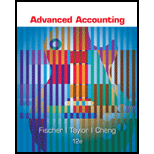
Business combination:
Business combination refers to the combining of one or more business organizations in a single entity. The business combination leads to the formation of combined financial statements. After business combination, the entities having separate control merges into one having a control over all the assets and liabilities. Merging and acquisition are types of business combinations.
Consolidated financial statements:
The consolidated financial statements refer to the combined financial statements of the entities which are prepared at the year-end. The consolidated financial statements are prepared when one organization is either acquired by the other entity or two organizations merge to form the new entity. The consolidated financial statements serve the purpose of both the entities about financial information.
Variable interest entity:
A legal business structure is known as variable interest entity when an investor has interest which is controlled even when they do not have majority of the voting rights. Commonly, VIE activities includes leasing, financial assets, research and development, hedging financial instruments, and other arrangements transfers. Primary beneficiary is a term which is used to designate that party having control over VIE’s financial interest.
The primary beneficiary’s share computation in VIE.
Want to see the full answer?
Check out a sample textbook solution
- Why is the distinction between paid-in capital andretained earnings important?arrow_forwardWhy are preferred dividends deducted from net income when calculating EPS? Are there circumstances when this deduction is not made?arrow_forwardThe pre-emptive right of a common stockholder is the right to?arrow_forward
- Is Share Dividends qualify as Revenue?arrow_forwardWhat are if any the differences between Stockholder's Equity, Retained Earnings, Common Stock, Additional paid-in-capital, and Par Value? Are they Debit or Credit accounts? Are they found in Proprietorships, Partnerships, or Corporationsarrow_forwardWhich of the following can be used to offset a passive loss? a.Dividend income from stock held as an investment b.Active income such as wages c.Pension income d.Passive income such as income from a limited partnershiparrow_forward
- Which of the following is not associated with characteristics of common stock? O residual claim on income and assetsO proxyO cumulative dividendsO dual-class stockarrow_forwardHow are paid-in-capital and retained earnings: Similar? Different?arrow_forwardWhat are dividends in arrears? How do they affect the allocation of dividends to preference and ordinary shareholder if: Preference share capital are noncumulative Preference share capital are cumulativearrow_forward
 EBK CONTEMPORARY FINANCIAL MANAGEMENTFinanceISBN:9781337514835Author:MOYERPublisher:CENGAGE LEARNING - CONSIGNMENT
EBK CONTEMPORARY FINANCIAL MANAGEMENTFinanceISBN:9781337514835Author:MOYERPublisher:CENGAGE LEARNING - CONSIGNMENT Financial Reporting, Financial Statement Analysis...FinanceISBN:9781285190907Author:James M. Wahlen, Stephen P. Baginski, Mark BradshawPublisher:Cengage Learning
Financial Reporting, Financial Statement Analysis...FinanceISBN:9781285190907Author:James M. Wahlen, Stephen P. Baginski, Mark BradshawPublisher:Cengage Learning Intermediate Accounting: Reporting And AnalysisAccountingISBN:9781337788281Author:James M. Wahlen, Jefferson P. Jones, Donald PagachPublisher:Cengage Learning
Intermediate Accounting: Reporting And AnalysisAccountingISBN:9781337788281Author:James M. Wahlen, Jefferson P. Jones, Donald PagachPublisher:Cengage Learning





